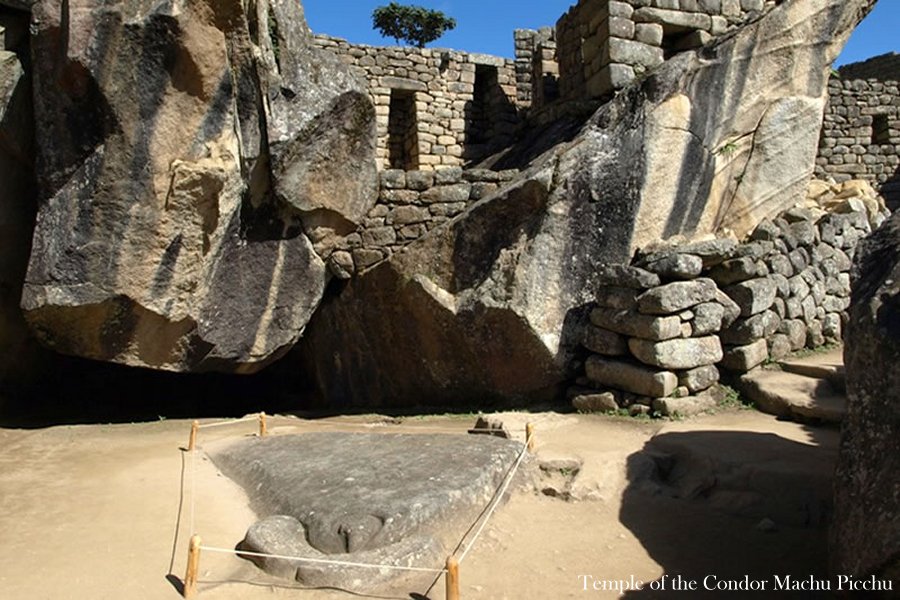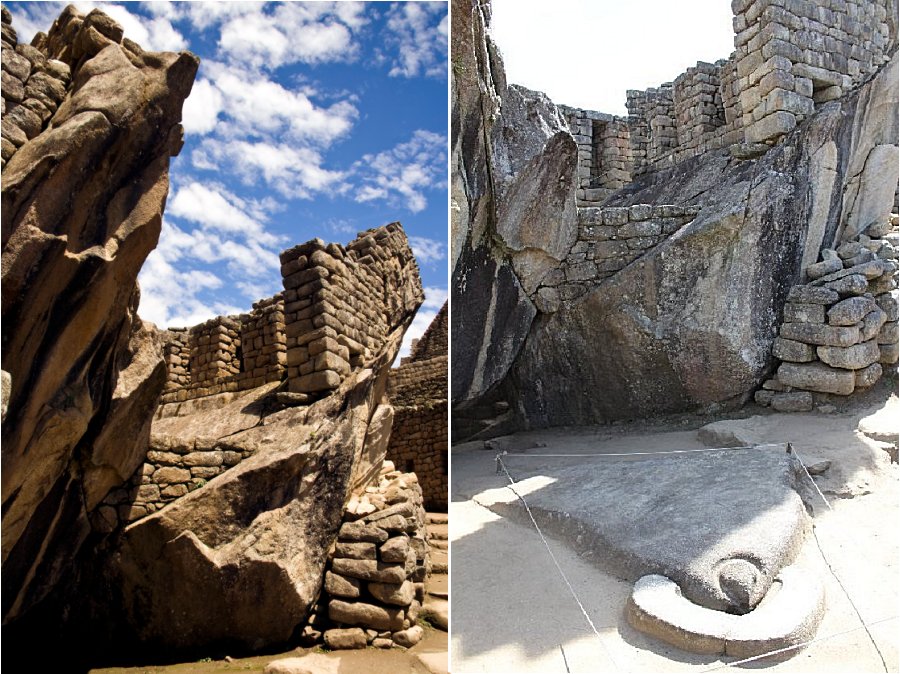MessageToEagle.com – The Temple of the Condor in Machu Picchu is a spectacular and one of many examples of extraordinary Inca stonemasonry. It is also one of several local temples located in the sacred area of these ancient people.
The Temple of the Condor, located in the South East of the urban sector of the Citadel of Machu Picchu, is unique. It has an irregular shape that has been built to the outlines of the pre-existing rock that began to take shape millions of years ago.
The condor – South America’s largest bird that granted the status of King of the Andes, was sacred, mystical bird, a deity to the Incas and to honor this bird, they skillfully shaped the small temple into the outspread wings of a flying condor, which is known to have a wingspan of up to 8 feet, and it can fly to great heights.
The Condor was sacred bird for all the people of the Andes. The bird was divine symbol of fertility and people believed that by moving its enormous wings, the bird could gather clouds producing rain, the best fertilizer for the land.
The Condor was and is still admired as a symbol of power and majesty.
On the floor of the temple is a rock carved in the shape of the condor’s head and neck feathers, resembling the figure of a three-dimensional bird.
See also:
10 Great Ancient Mysteries Of Peru
Unraveling The Mystery Of The Phoenix: The Bird Of Immortality
Astonishing Pre-Inca Salt Ponds of Maras In Peru Were Created By The Chanapata Culture
Manco Capac: Legendary Founder Of The Inca Dynasty Of Peru
The temple was built above the carved wings of the bird, while below the rock was a small alcove for offerings.
It is believed that the head of the bird was use as a sacrificial altar, and a small cave or rather alcove that contained a mummy was discovered under the temple.
There are caves for rituals and stone carvings which have been said to be a representation of a Condor.
Behind the temple, there are remains of a prison complex with human-sized niches and an underground network of dungeons. Historical chronicles confirm that there were several similar Inca prison sites; an accused citizen would be shackled into the niches for up to 3 days to await the deliberation of his fate. He could be put to death for diverse sins such as theft, laziness or lust.
Photo: Beto Santillán. Machu Picchu Tours
According to one theory, the prisoners were sacrificed as an offering to the condors and they were kept in the cells, located beneath the Temple of the Condor.
Undoubtedly, this was a place specifically built for worshiping the “Apu Kuntur” (condor), which was one of the three sacred animals in the Inca culture, as well as the serpent and the puma (mountain lion).
MessageToEagle.com
Expand for references







